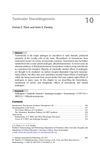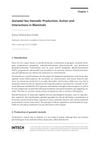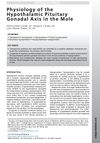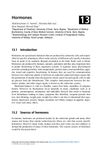Intratesticular Control of Steroidogenesis
December 1990
in “
Clinical endocrinology
”
Leydig cells seminiferous tubules hormonal regulation paracrine interactions insulin-like growth factors transforming growth factor-β interleukins steroidogenesis insulin somatomedin-C FSH Sertoli cells arginine vasopressin spermatogenesis gonadotropin hormone-releasing hormone agonists Leydig cells seminiferous tubules hormonal regulation paracrine interactions IGF TGF-β interleukins steroidogenesis insulin IGF-1 FSH Sertoli cells arginine vasopressin spermatogenesis GnRH agonists
TLDR The testes control steroid production through complex interactions involving various cells and signaling molecules.
The document "Intratesticular Control Of Steroidogenesis" from December 1990 reviewed the mechanisms regulating steroid production within the testes, emphasizing the role of Leydig cells and various influencing factors such as local feedback from seminiferous tubules, hormonal regulation, and paracrine interactions. It highlighted the complexity of intratesticular control involving multiple signaling pathways and regulatory molecules like insulin-like growth factors, transforming growth factor-β, and interleukins. The research underscored the importance of the local testicular environment in modulating steroidogenesis, with implications for understanding male reproductive health and disorders. Key findings included the influence of insulin, somatomedin-C, and FSH on Sertoli cells, the impact of arginine vasopressin on spermatogenesis, and the lack of direct effects of gonadotropin hormone-releasing hormone agonists on human testicular steroidogenesis, based on studies involving both human and animal models.




